The theme of the 4th Nordic Workshop on Cosmogenic Nuclides (4NWCN) ‘Landscape development and geohazards‘ is inspired by the workshop location, the western Norwegian fjords, which were formed through a complex interplay of tectonic process and the cryosphere. Long and short-term changes in the cryosphere are manifested in the characteristic present-day fjord landscape and the geohazards that put local communities at risk. Glacier retreat, changing snowfall patterns, and sea level rise, in tandem with increased settlement and tourism, will likely impact fjord regions and associated geohazard events in the future.

Western Norway is characterised by high-elevation low-relief regions dissected by an intricate network of deep valleys and fjords, the result of a complex interplay of long-term tectonic processes and repeated cycles of glacial erosion and deposition due to the advance and retreat of the Scandinavian Ice Sheet and local glaciers. The contrasting nature, and origin, of this rugged landscape, has been a subject of heated debate on the topographic evolution of southwest Scandinavia.
Geiranger, with a permanent population of ~250, exemplifies the problems posed by human occupation of such a landscape. Several unstable mountain slopes close by are under active surveillance because of the high-risk of rock-falls, snow avalanches, and rock-fall induced tsunamis. Geiranger is also the location of the UNESCO visitor’s centre for West Norwegian Fjords.
Cosmogenic Nuclides (CNs) are rare isotopes, produced in the earth’s atmosphere and upper surface via exposure to naturally occurring cosmic radiation. Measurement of CNs in rocks and sediments began only 30 years ago. Today, CNs are applied to address a range of research questions, as are a means of directly dating landforms and quantifying erosion rates.
CNs open up the possibility to gain new insight into the timing of sudden, climate-triggered events, such as the timing and retreat rates of glaciers, as well as the longer-term processes that sculpted the characteristic mountains and fjords of the Norwegian landscape we enjoy today. For example, dating of rock-slope instability events using CNs has shown that the occurrence of such hazards in Western Norway peaked following decay of the Scandinavian Ice Sheet, and have occurred at a constant frequency since the mid-Holocene climatic optimum around 8,500 years ago.
